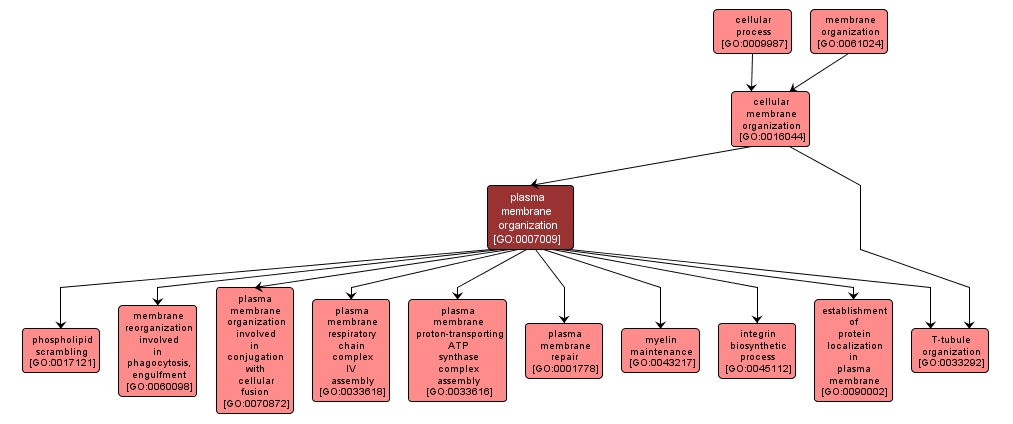GO TERM SUMMARY
|
| Name: |
plasma membrane organization |
| Acc: |
GO:0007009 |
| Aspect: |
Biological Process |
| Desc: |
A process that is carried out at the cellular level which results in the assembly, arrangement of constituent parts, or disassembly of the plasma membrane. |
Synonyms:
- plasma membrane organization and biogenesis
- plasma membrane organisation
|
|

|
INTERACTIVE GO GRAPH
|














